Heinrich Himmler
Otto Rahn – Otto Skorzeny Raiders of the Found Ark?
The founders of the Third Reich were esoterically involved with matters which unavoidably skirt the mysteries associated with the valley of Rennes-le-Chateau. Their interests were not however, confined to the ephemeral, there is evidence of the tenacity with which they pursued the material associations of the valley. Many assorted books on Rennes-le-Chateau mention that a battalion of German mining engineers made excavations in the area during World War Two.
There is a real, existing mountain in the south of France which is rumored to house the Holy Grail...
There is a real, existing mountain in the south of France which is rumored to house the Holy Grail. In fact, local legend says that the Grail has always been there, ever since a dove from Heaven descended upon the mountain, split it open with its beak, and dropped the Grail inside. This is the mountain of Montsegur, which was the last Cathari stronghold defeated by the Albigensian Crusade. (This was the only crusade waged by Christiandom against people who were Christians themselves.) The term “Cathar” was a catch-all term used by the Catholic Church for the numerous Gnostic Christian cults that proliferated across the Languedoc region of France during the Middle Ages. As they grew in numbers, they gradually became a threat to orthodox Christianity.
Revealed: Himmler's secret quest to locate the 'Aryan Holy Grail'
Heinrich Himmler, the head of the Nazi SS, made a secret wartime mission to an abbey in Spain in search of what he believed was the Aryan Holy Grail, a new book claims. Himmler visited the famous Montserrat Abbey near Barcelona where he thought he would find the Grail which Jesus Christ was said to have used to consecrate the Last Supper.
According to The Desecrated Abbey, by Montserrat Rico Góngora, the Reichsführer-SS thought if he could lay claim to the Holy Grail it would help Germany win the war and give him supernatural powers. The book claims that, far from being the King of the Jews, Himmler shared the outlandish belief with other leading Nazis that Jesus Christ was actually descended from Aryan stock.
Holy Grail
Since the publication of The Da Vinci Code the debate rages as to what and where the true Holy Grail exists
Taken as a whole, the various renditions of the Holy Grail legend, whether they derive from Europe or Asia, imply that there are many forms that the Holy Grail can take.
These legends assert that the Holy Grail can be anything from the platter mentioned by Chrétien de Troyes, the first author of the Holy Grail legend, to the Cup of Christ alluded to by Robert de Boron, or even the Stone of Heaven mentioned by Wolfram von Eschenbach in Parzival.
Invisible Eagle and NS Occult History, by Alan Baker
While in Berlin, [Karl Maria] Weisthor worked with the author and historian Otto Rahn (1904-1939), who had a profound interest in medieval Grail legends and the Cathar heresy. In 1933, Rahn published a romantic historical work entitled Kreuzzug gegen den Gral (Crusade Against the Grail), which was a study of the Albigensian Crusade, a war between the Roman Catholic church and the Cathars (or Albigensians), an ascetic religious sect that flourished in southern France in the twelfth and thirteenth centuries. The Cathars believed that the teachings of Christ had been corrupted by the Church -and, indeed, that Christ was exclusively a being of spirit who had never been incarnated in human form.
Thule, the Priory of Sion, and Otto Rahn
Conspiracy buffs have long been interested in the Nazis for their occult connections, and in recent years the south of France has garnered interest for a quite different supposed occult conspiracy, yet the two are rarely connected.
In an interview with Peter Levenda, Dagobert’s Revenge Magazine hit on the figure of Otto Rahn, grail researcher, who, after having completed a book on the grail mysteries of south France for the Nazis mysteriously died in the Pyrenees. It was also pointed out that around the time that Otto Rahn, who was a skilled mountain climber, was in all probability killed by the Nazis, a figure by the name of Karl Maria-Wilgut, known as Weisthor, who was a mystic employed by the SS, was relieved of his duties and gradually retired from public life.
In the article, the story was left as one of the many mysterious deaths surrounding whatever lies around Rennes-la-Chateau, but the truth of the matter can indeed be reconstructed, and gives some good insight into the forces at work in these two realms.
Отто Ран и поиски Святого Грааля
Отто Ран (1904-1938 гг.), о котором говорили как о талантливом молодом литераторе и историке, был одной из действительно ярких личностей этого века. До своей загадочной смерти в возрасте 35 лет он успел написать две книги о катарах южной Франции: "Крестовый поход против Грааля" ("Kreuzzug gegen den Gral") и "Двор Люцифера" ("Luzifers Hofgesind"). О его жизни и трагической смерти ходят легенды. Хотя его книги оказали влияние на таких известных русскому читателю авторов как Тревор Равенскрофт (Trevor Ravenscroft) и Жан-Мишель Анжебер (Jean-Michel Angebert), на русский язык они никогда не переводились. В бестселлере 1982 года "Святая кровь, святой Грааль" (Holy Blood, Holy Grail - в русском переводе "Священная загадка") имя Отто Рана упоминается в небольшом, но интригующем примечании.
Otto Rahn and the Quest for the Holy Grail
Otto Rahn (1904-1938), described as a gifted young author and historian, was one of this century's truly fascinating figures. Prior to his mysterious death, at age 35, he wrote two books about the Cathars of southern France: *Kreuzzug gegen den Gral* ("Crusade Against the Grail") and *Luzifers Hofgesinf* ("Lucifer's Court"). Legends continue to surround both his life and tragic death. While his books influenced such authors as Trevor Ravenscroft and Jean-Michel Angebert, they were never translated into English. In the 1982 best selling book *Holy Blood, Holy Grail*, Otto Rahn's name appears in a small but intriguing footnote. Otto Rahn believed that he had found the location of the Holy Grail Mountain, the Montsalvat of legend, in the Cathar mountain fortress of Montsegur in the French Pyrenees. He was, says Prof. Joscelyn Godwin, "largely responsible for the mythological complex that associated the Cathars and Montsegur with the Holy Grail and its Castle."
Norma Lorre Goodrich in her own highly acclaimed work *The Holy Grail* pays tribute to Otto Rahn's "Crusade Against the Grail" describing it as "a wonderful book, a monument to this German idealist author, who died mysteriously during a descent in the Alps."
Otto Rahn in Jones' Celtic Encyclopedia
b. February 18, 1904; Michelstadt, Germany.
d. March 13, 1939; Tyrolean Mts.
Poet, mystic, and Nazi researcher. Rahn was obsessed with two ideas--the Holy Grail and the Cathars, medieval French heretics; while in college, he had intended to write a dissertation on the hypothetical Kyot, the supposed troubador who gave Wolfram von Eschenbach the story of Parzival.
In 1929, he made a special trip to the Languedoc region of Southern France, a hotbed of Catharist activities in the thirteenth century. He began excavating at Montsegur, the last Cathar stronghold to fall to the Inquisition. Legend had it that the Cathars had a great treasure which was never found, but hidden deep in the mountainside. Rahn was convinced that this treasure was the Holy Grail, and he intended to find it.
Baudino Mario - IL MITO CHE UCCIDE. Dai catari al nazismo: l'avventura di Otto Rahn l'uomo che cercava il Graal e incontro Hitler
Alla fine degli anni Venti un giovane e brillante storico tedesco, Otto Rahn, giunge per la prima volta in Provenza, sulle tracce del Santo Graal, la mitica reliquia la cui storia è strettamente connessa con quella dell'eresia e della persecuzione dei càtari durante il Medioevo. Attraverso i meandri di questa vicenda, avvolta tra realtà e leggenda, l'autore ripercorre con ampio respiro narrativo una delle pagine più fosche della storia europea. Rahn finirà per essere cooptato dai dirigenti nazisti che intendono rilanciare il mito "ariano" del Graal, promuovendo vere e proprie spedizioni di ricerca anche dopo la misteriosa morte del giovane studioso, avvenuta nel 1938, a soli trentaquattro anni.
Dati 2004, 256 p., rilegato
Editore Longanesi

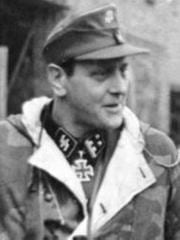
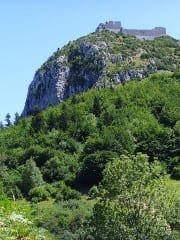
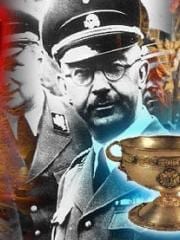
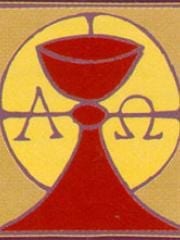
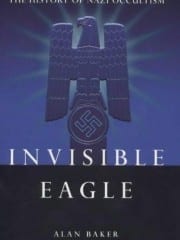
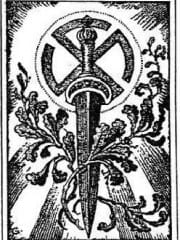
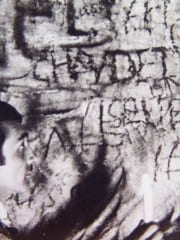
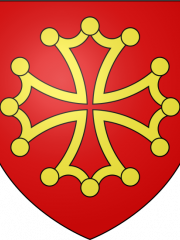
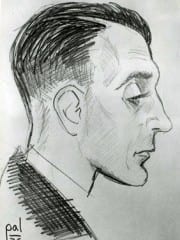
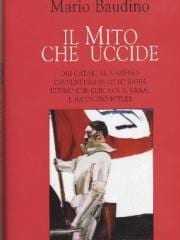
Neueste Kommentare
vor 13 Jahre 11 Wochen
vor 13 Jahre 12 Wochen
vor 13 Jahre 12 Wochen
vor 13 Jahre 12 Wochen
vor 13 Jahre 15 Wochen
vor 13 Jahre 21 Wochen